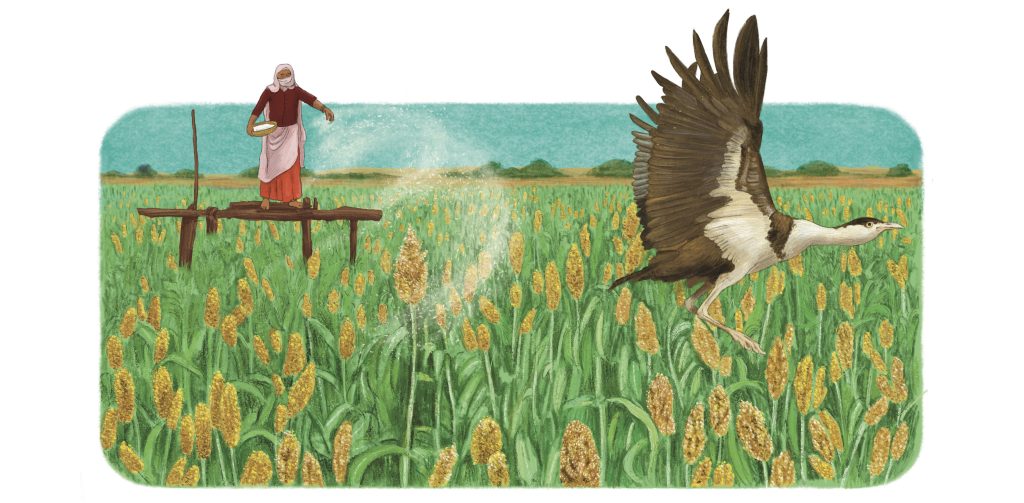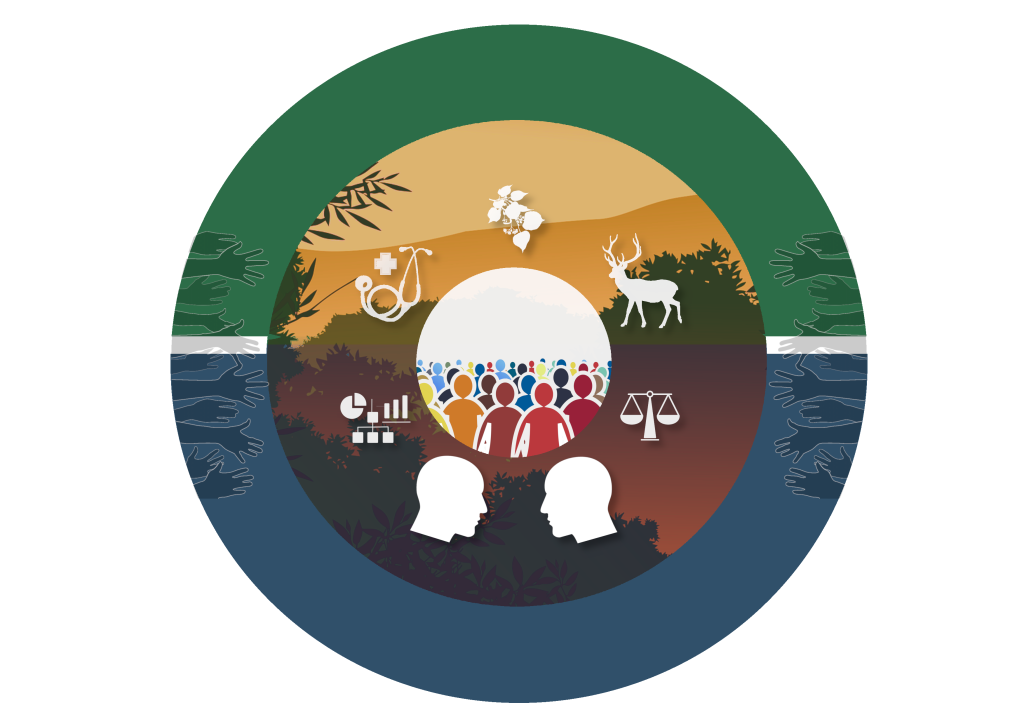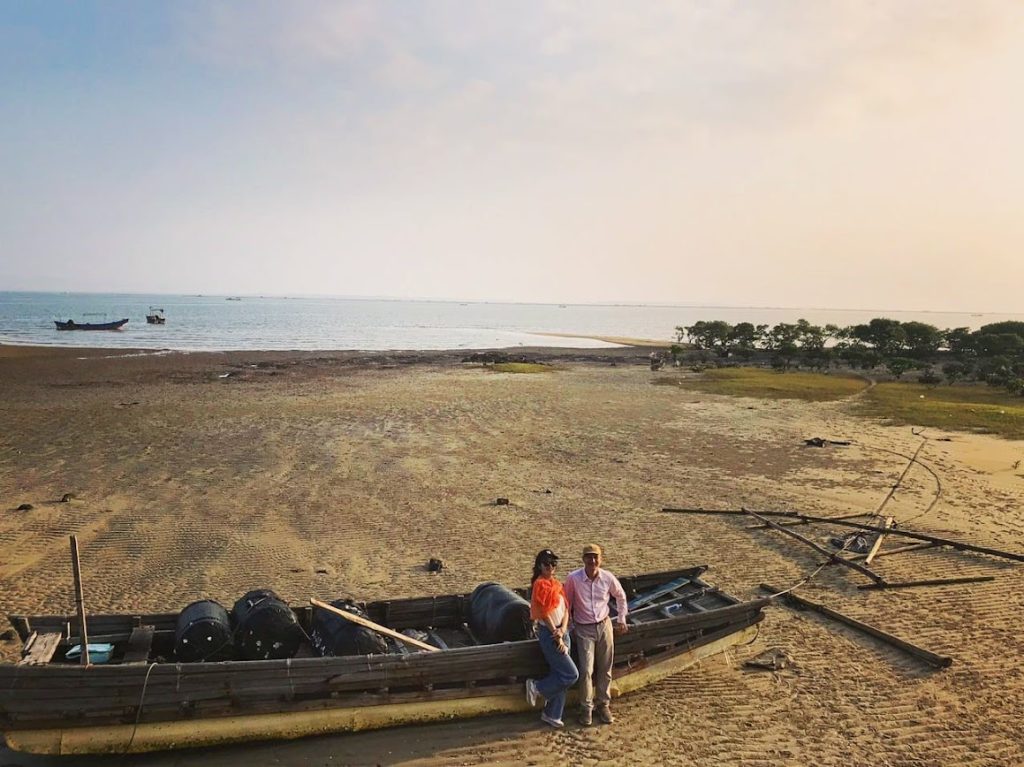CONSERVATION, LANDSCAPE CONNECTIVITY AND THE NEED FOR HABITAT NETWORKS
Many natural habitats that once occupied large and continuous areas on the planet are now restricted to small patches scattered throughout human-dominated landscapes. For many species, each of these patches, alone, may be too small to harbor stable and resilient populations. Therefore, species’ long-term persistence depends on connectivity among spatially separated habitat patches in the landscape. The intervening landscape matrix that separates habitat patches is, in many parts of the world, increasingly hostile and less permeable for species’ movement due to global change processes such as deforestation, agricultural intensification or urban sprawl. Additionally, climate change will inevitably make currently suitable areas inhospitable for many species while new habitats matching species’ environmental requirements may become available at higher latitudes or altitudes. The survival of many species therefore depends upon their capacity to respond to these changes by moving large distances across human-modified landscapes. In all these cases, a top concern in conservation is to maintain or improve the connections among habitat patches or protected areas. That is, to conserve or create habitat networks that connect different parts of land and allow for the long-term persistence of native biota.
HOW TO REPRESENT THE HABITAT AS A NETWORK
In a network perspective, the habitat existing in a landscape is represented as a set of nodes that are connected by links. Nodes are habitat patches separated by unsuitable areas and links represent ecological corridors. Whether two patches can be considered as linked or not is dependent on the dispersal distances and movement behaviour of a given species. For species with large movement abilities, most nodes in a habitat network will be linked, while for species with poor dispersal, only very few patches will be connected to each other. In cases where the area between habitat patches is uniform, we can define links just based on geographical distance between patches. But in other cases, where the matrix around patches is heterogeneous and this makes a difference for species movement, links need to be based on effective distances that consider the accumulated cost of moving between patches (with higher costs when traversing inhospitable areas and lower costs for more hospitable ones). Using network analytical tools, we can compare the numerous possible paths, both direct and indirect, connecting nodes in a habitat network and determine the most important patches and connections to conserve. Other options for defining links based directly on empirical information exist, ranging from radio-tracking data and mark-recapture procedures to genetic information of individuals sampled in different parts of the landscape to infer the levels of gene flow (and hence of connectivity between them). Some of these latter options however, may be affordable only within research projects and not within the typical resources for data gathering available in a given conservation plan.
ADVANTAGES OF NETWORKS FOR INFORMING CONSERVATION PRACTICE
The large variety of options, information types and spatial and ecological details that can be used to define and model habitat networks makes this approach very useful to inform many different conservation problems. The approach is flexible enough to accommodate data of different types and quality. If the only information available consists of a map depicting the distribution of a given habitat type (e.g. forest) in a region, a network can be built using habitat patches and their areas for the nodes and defining links based on geographical distances. If, in another study, or later on in the same conservation problem, more detailed information is available (e.g. species population size in the different patches or radio-tracking of many individuals), such information can be incorporated without completely changing the analytical approach, i.e. by using much the same network model but now improved by being enriched with more biological detail. This flexibility is important in conservation practice because the information available that is relevant to conservation decision making can be highly varied in quality and type. Networks are not data-hungry (even though they can accommodate complex information if it is available), and they work even with modest data as is usually the case in many conservation problems covering large spatial scales. This has led many scientists and conservationists to conclude that network-based approaches may possess the greatest benefit-to-effort ratio for conservation problems that require characterisation of connectivity at relatively large scales.
Probably one of the most important and appreciated advantages of network analysis is that it provides spatially explicit guidelines by assessing the individual contribution of each habitat patch and corridor to maintain landscape connectivity. Networks not only provide a simply descriptive analysis in which the degree of connectivity is summarised at the level of the entire landscape, but also allow us to identify areas that are critical for conserving (or eventually upholding) current connectivity levels.
Finally, a network approach is intuitive and powerful. It is intuitive because, even for practitioners with little analytical or mathematical background, it is natural to think of a landscape as a network of habitat patches connected by links. It is powerful because, even though network analysis is a recent entrant in spatial ecology and conservation, it has been intensively developed for decades in other disciplines (transportation, computers, chemistry, social sciences, etc.), which offers a wealth of algorithms and analytical techniques that, with the necessary modifications, can be adapted and applied for conservation purposes.
It is true that some algorithmic and mathematical aspects of network analysis may be difficult for practitioners who are not specifically trained in this field. However, even on that front, there is recent good news. Several solid quantitative tools are now available in the form of free and user-driven software packages based on different variants of network analysis. These tools are being widely and increasingly used worldwide to carry out habitat connectivity analysis and related decision making in conservation. Some examples of such software include Conefor (https://www.cone for.org/), Circuitscape (https://www.circuitscape. org/), Corridor Designer (https://corridordesign. org/), Unicor (https://cel.dbs.umt.edu/cms/index. php/software/unicor), Linkage Mapper (https:// code.google.com/p/linkage-mapper/) or Guidos.
APPLIED GUIDELINES THAT NETWORK ANALYSIS CAN OFFER TO CONSERVATIONISTS
Network analysis can help conservation decisions by providing answers to a variety of questions, such as the following:
Which habitat patches and links should be prioritised for conservation?
One of the decision-support guidelines that is often required by conservation practitioners consists of a ranking of individual habitat patches in a region by their importance to sustain habitat connectivity. Since not all the habitat patches can be protected due to limited conservation resources, which patches should be prioritised for conservation? Network analysis is particularly efficient to deliver quantitative estimates of the contribution of each individual patch, as well as each individual link (e.g. corridor), to the functioning of the entire system, considering the dependences and interactions between all the landscape elements. Network analysis has shown that the importance of some network elements can be disproportionally higher than others. Usually only a few patches and links function as irreplaceable connectivity providers. By conserving a relatively small (but carefully selected) portion of the total habitat much of the connectivity in the landscape might be maintained. The conservation of these priority patches and links can even have a spillover effect, i.e. it can help the conservation of many other habitat patches by extending and expanding their beneficial influence throughout the landscape network.

Which habitat patches or linkage areas are of little importance and can be converted to other land uses?
The ability of network analysis to rank habitat patches and links by their contribution to connectivity means that we can also identify patches and links of low importance that can be exploited or converted to other land uses while minimising the negative ecological consequences, i.e. having the smallest possible negative impact on connectivity.
Where can the spread of invasive species, diseases, pests or forest fires be halted more efficiently?
In the same way in which network analysis can identify critical areas for the dispersal of endangered species, it can also pinpoint those places where to target to control the spread of exotic species or pathogens across the landscape. Depending on the particular species or ecological process of concern and on the conservation goals, practitioners may want to maintain, enhance or decrease connectivity, but in all these cases a network perspective is particularly efficient in identifying the critical areas in which to intervene.
Which areas of the landscape are well connected?
When locations for species reintroductions are sought, not just the habitat quality at that location but also the degree of connectivity to other populations or habitat areas is crucial to ensure long term species persistence. When a reserve needs to be established, current local species richness might not be sufficient as a criterion for where to locate the reserve. This is because most of the present diversity may be lost with time if there are no connections to sources of colonisers that can repopulate that reserve after local extinctions occurring as a result of demographic stochasticity or changing environmental conditions. In both these cases, network analysis can tell us how connected a particular reserve is, i.e. how much direct and indirect fluxes of genes and individuals it will receive, which will be crucial to sustain biodiversity over the long-term.

In how many ways do particular habitat patches contribute to connectivity?
Habitat patches can have different roles as connectivity providers, and network analysis is able to quantify each role separately and provide a more detailed assessment of connectivity. A habitat patch provides some amount of connected habitat resources within itself and, in addition, it can be well connected through strong links to other habitat patches. Moreover, it can either act as a source or a sink, and, eventually, it can be important as a stepping stone upholding dispersal among other habitat patches that would otherwise be more weakly connected or completely isolated. Network analysis can provide an integrated analytical framework for the different ways in which habitat patches can increase the amount of habitat resources that are available to species in the landscape. Through this, we avoid subjective decisions in conservation by providing a quantitative basis to determine the relative weight that different conservation strategies should have, such as focusing on the spatial configuration of habitats compared to investing just in the amount or quality of habitat irrespectively of its spatial arrangement.
For which type of species is connectivity a conservation concern?
In a large landscape or region there might be many species of conservation importance, and in general it is not feasible to develop a connectivity conservation plan for each of them. Network analysis can help simplify this problem by identifying those (potentially few) species that are really dependent on connectivity levels and their potential changes in a given region. Usually, the species with short to intermediate dispersal abilities are those that can benefit more from the maintenance or improvement of landscape connectivity, and those for which connectivity investments (such as maintaining or creating corridors, stepping stone patches or permeable matrices) translate into a more clear and positive response in terms of species abundance, genetic diversity and persistence. Species that traverse large distances across the landscape depend little on network topology and habitat spatial configuration, since they can almost directly move to any habitat area without limitations, while for other species dispersing very short distances, or lacking the ability to move through the matrix, conservation of current connectivity levels may be clearly insufficient to provide any significant contribution to their abundance or survival.
What are the temporal trends in connectivity and how does habitat loss translate into connectivity loss?
Landscape networks change through time, as a result of habitat loss and changes in the matrix in between habitat patches. Network analysis can quantify the degree to which these changes are deleterious for the ability of species to traverse fragmented landscapes and reach habitat resources further apart. It can also indicate if the amount of habitat loss has translated into a comparatively large or small decrease in habitat connectivity, depending on whether key connecting, irreplaceable elements or peripheral, potentially redundant patches have been lost from the landscape.
CONCLUSIONS
Determining the actual role of habitat connectivity for species movement is of paramount importance for developing effective conservation strategies that help to mitigate the impacts of global change on biodiversity. Achieving this objective requires methods that are able to assess the connectivity between habitat patches and to quantify the impacts of landscape change and fragmentation on the capacity of species to disperse among suitable habitat patches. Network analysis is already playing a big role towards this end, both in the scientific community and among conservation practitioners. Network analysis is a flexible, appealing and powerful tool that provides a spatial representation of the landscape that can be examined in relation to land use activities and conservation measures. Networks offer a well-developed mathematical framework that has the virtue of revealing key aspects of the functioning of landscapes and provides an operational way of quantifying the impacts of management decisions on landscape connectivity. Many of the natural and human-modified systems that we need to manage and conserve can indeed benefit from the insights that a network perspective is able to provide. This perspective means that local conservation actions should be framed in a broader context of landscape networks, in which the individual habitat patches depend on each other in such a way that their interactions can determine the success (or failure) of the objectives of a given conservation plan.
Suggested reading:
Calabrese JM & WF Fagan. 2004. A comparison shopper’s guide to connectivity metrics. Frontiers in Ecology and the Environment 2: 529-536.
Galpern P, M Manseau & A Fall. 2011. Patch-based graphs of landscape connectivity: a guide to construction, analysis, and application for conservation. Biological Conservation 144: 44-55.
Urban DL, ES Minor, EA Treml & RS Schick. 2009. Graph models of habitat mosaics. Ecology Letters 12:260-273.
Illustrations: Kalyani Ganapathy,
Photographs: MO Anand, Vijay Kumar






